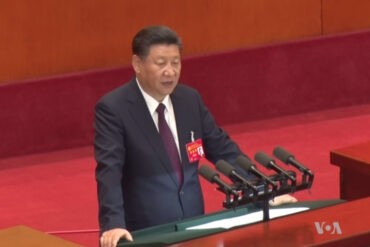When Chief Minister Pinarayi Vijayan rang the opening bell at the London Stock Exchange (LSE) in May this year to mark the listing of the Masala bonds sold by the state-government-owned Kerala Infrastructure Investment Fund Board (KIIFB), it was celebration time in Kerala. Masala bonds are investment products issued by Indian entities outside the country and denominated in rupees.
KIIFB’s debut bond on LSE raised Rs 2,150 crore as part of a plan to collect up to Rs 50,000 crore for the agency, set up by the state government to raise resources and fund infrastructure projects. It was the first-ever offshore capital market issuance from a state-level entity.
Although it is a customary practice for the exchange to let the CEO or president of the listing company do the honours of opening the market as a public relations exercise to please the clients, the event was made out to be a great achievement for Pinarayi Vijayan personally and the state government in general.
But right from the interpretation of that event to the latest development relating to the auditing of the agency’s finances, KIIFB has been mired in controversy.
First, eyebrows had gone up over the disproportionately high coupon rate offered by the bond. The benchmark for similar short-term notes is less than 3 percent per annum while medium term offerings fetch anything between 5 and 6 percent. But the interest rate in the KIIFB note, which is a medium-term offering, is 9.72 percent and far too high. In fact, out of a total of 42 such bond issues floated on the LSE in the past two years, none had offered a rate anywhere near KIIFB’s.
But then it has to be remembered that the KIIFB bond is rated as junk investment category while papers floated on the LSE are all investment-grade. All Indian offerings on LSE so far have been AAA-rated while the KIIFB note is rated only as BB.
The unduly high rate and the identity of the largest investor in KIIFB were enough to plant doubts in the minds of the people. The major subscriber to the issue was a Canadian pension fund, which also holds about 20 percent stake in SNC Lavalin, the controversial firm that has become a household name in Kerala due to its involvement in a scam. It was a state government deal with the company when Pinarayi Vijayan was the Electricity Minister that kept the Marxist strongman out of power politics for over a decade, until he was cleared by a CBI special court, which heard the corruption case, citing lack of evidence. The release paved the way for Pinarayi Vijayan to become chief minister.
To make matters even more curious, both the state government and KIIFB have been less than forthcoming on the affairs of institution. A controversy has been raging over the demand by the Comptroller and Auditor General (CAG) for the audit of KIIFB accounts, which the state government has been refusing on the ground of technicalities.
The government maintains that it is enough for the CAG to do a limited audit under Section 14 (1) of the CAG-DPC Act, 1971, which only mandates the examination of receipts and expenditure, while the CAG wants a full audit as provided under Section 20 (2). A larger audit will open up the entire KIIFB book for scrutiny, including the understated aspects of the bond issue, which the state government feels will spill the beans.
The opposition United Democratic Front (UDF) has been mounting a fierce attack, spearheaded by Opposition Leader Ramesh Chennithala, over the entire episode, including the demand for a full-fledged audit, alleging that some of the goings-on in KIIFB are not above board. Finance Minister T M Thomas Issac, who is the vice-chairman of the agency, takes great pains to explain why the CAG audit is unnecessary, although most of the arguments sound less than convincing.
There may be compulsions for the state government to take its own stand. The return on investment along with repayment on the bond is fully and irrevocably guaranteed by the state government. Also, the state’s share of petroleum tax and proceeds from the motor vehicle tax (MVT) are pledged towards payment of returns on the bond. And yet KIIFB operates in a space of its own, which means that its activities are not realistically reflected in the state budget. This obviously creates transparency issues, which will get exposed in a thorough audit by the CAG.
There is a ceiling of 3 percent on the state’s fiscal deficit, which puts restrictions on the ability of the states to borrow funds. But there is serious concern that the lack of complete transparency in KIIFB accounts could lead to under-reporting of the deficit as expenditures get pushed to quasi-government entities. If there are more such instances and other states follow suit, this will not only distort the real deficit picture of the states, but also affect the calculation of national deficit.
In fact, the delay in the disbursement of central funds to Kerala, which has thrown the state government’s finances into total disarray, forcing a virtual freeze on the operations of the treasury, may be attributed to problems on this count.
This deficit limit might force the state government to do jugglery with the numbers so that the state is not seen flouting the norms. So, a thorough CAG audit under Section 20(2) may be the last thing that the government would like to see happen.
Despite all the pretentions, Finance Minister Thomas Issac’s credentials as a financial wizard are highly suspect. He had initially made tall claims that KIIFB would be able to raise overseas funds at not more than 3 percent, which turned out to be a pipe dream. Similarly, he had announced soon after assuming office that he could raise any amount through the Islamic finance route without paying interest.
The claim exposed his total lack of understanding about Islamic finance, where the rates are benchmarked against those in the conventional market, and often end up more costly. In Islamic banking, interest is illegal (haram), but the banks overcome this by calling it ‘profit’, which is generated through a series of paper transactions. In fact, in its current level of development, Islamic finance is more costly than comparable products in the conventional banking system.
The KIIFB issue leaves much to be desired in terms of transparency and even violates the norms of listing on the LSE. The exchange has specific rules and guidelines that establish minimum requirements of transparency, which include proper communication to the market, including the disclosure of market-sensitive information. These also cover shareholder interactions and disclosure considerations as well as best practices of financial reporting, all of which end up short in the case of the KIFFB note. If any aggrieved party complains to the exchange on below-par transparency, the issuers will have a problem at hand.
The KIIFB resistance to CAG audit flies in the face of claims made in the issue prospectus submitted to the LSE. The prospectus speaks high of the virtues of the auditing standards followed by CAG, and emphasises how the agency undertakes audits of all financial statements published by Indian government entities. It specifically mentions the CAG audit of the state government’s finance accounts and appropriation accounts.
There is elaborate explanation of the CAG auditing process, which examines and evaluates the financial records and expression of opinions on financial statements, evaluation of compliance with applicable statutes and regulations which affect the accuracy and completeness of accounting records.
But when it comes to opening of the books, both KIIFB and the state government have developed cold feet and are now resisting a full-scale audit on the ground of technicalities. They seem to be oblivious of the levels of transparency on the basis of which securities markets operate. It is a different matter altogether if there is any arrangement between KIIFB and the Canadian fund that overrides established practices.







